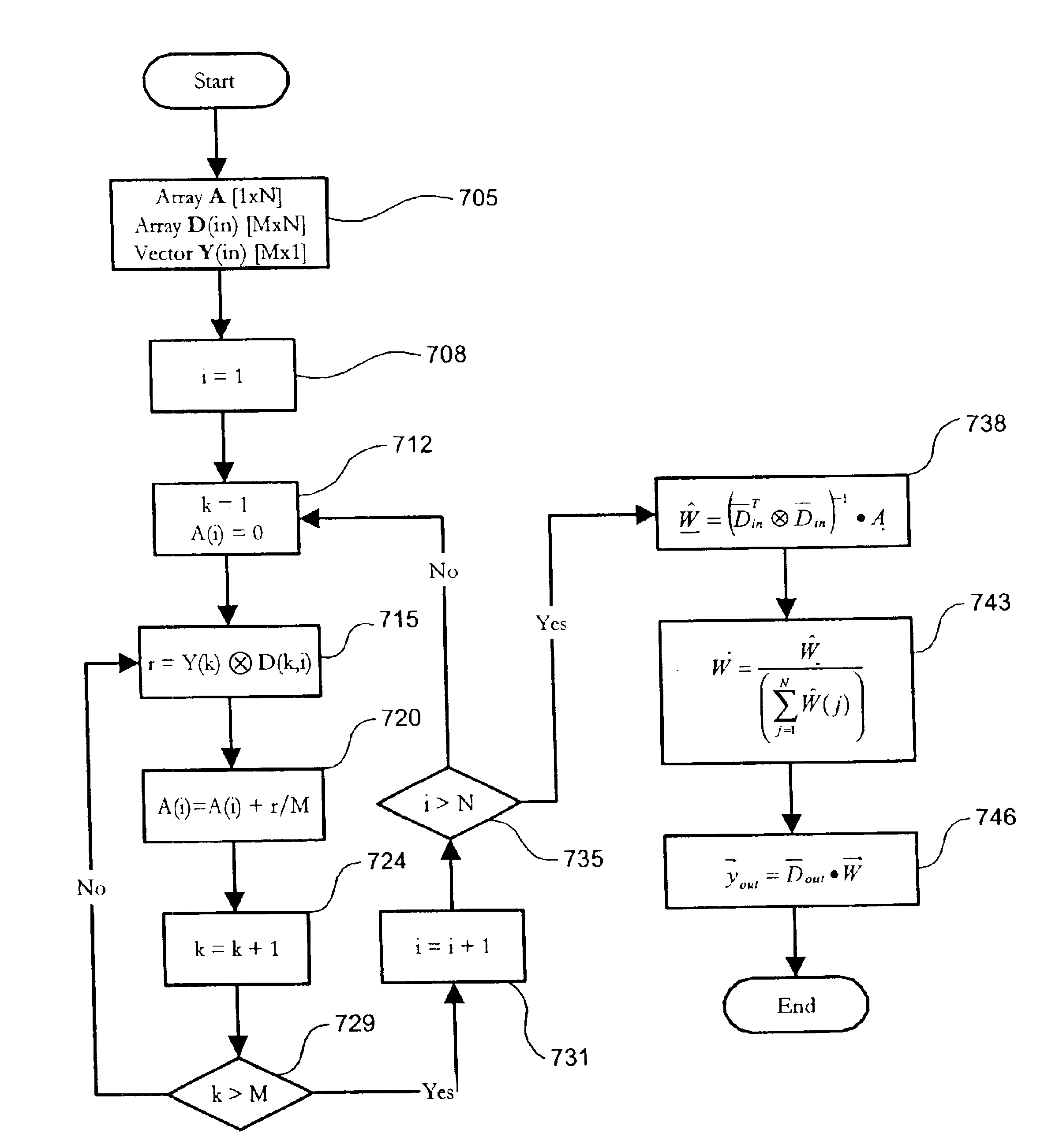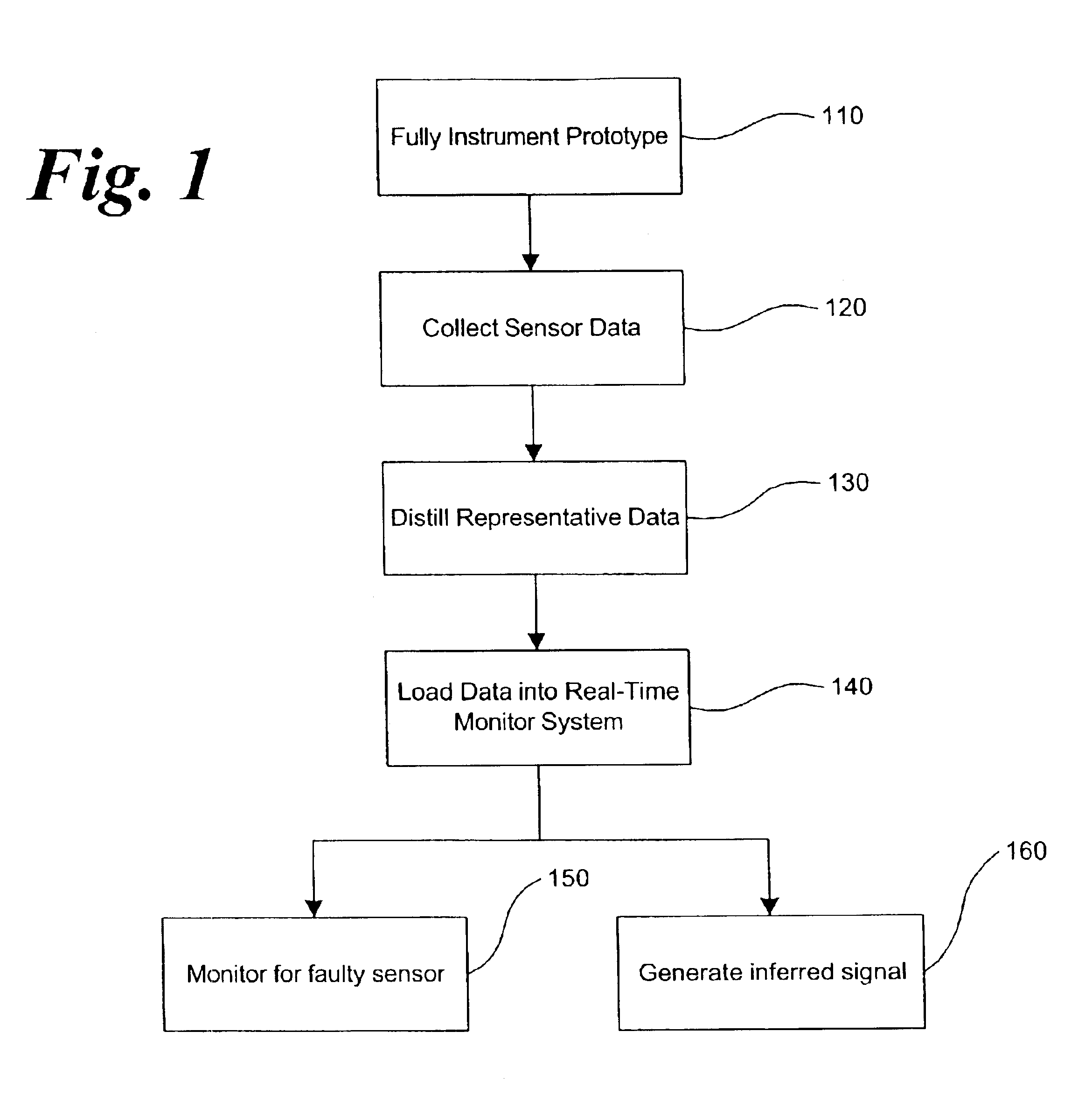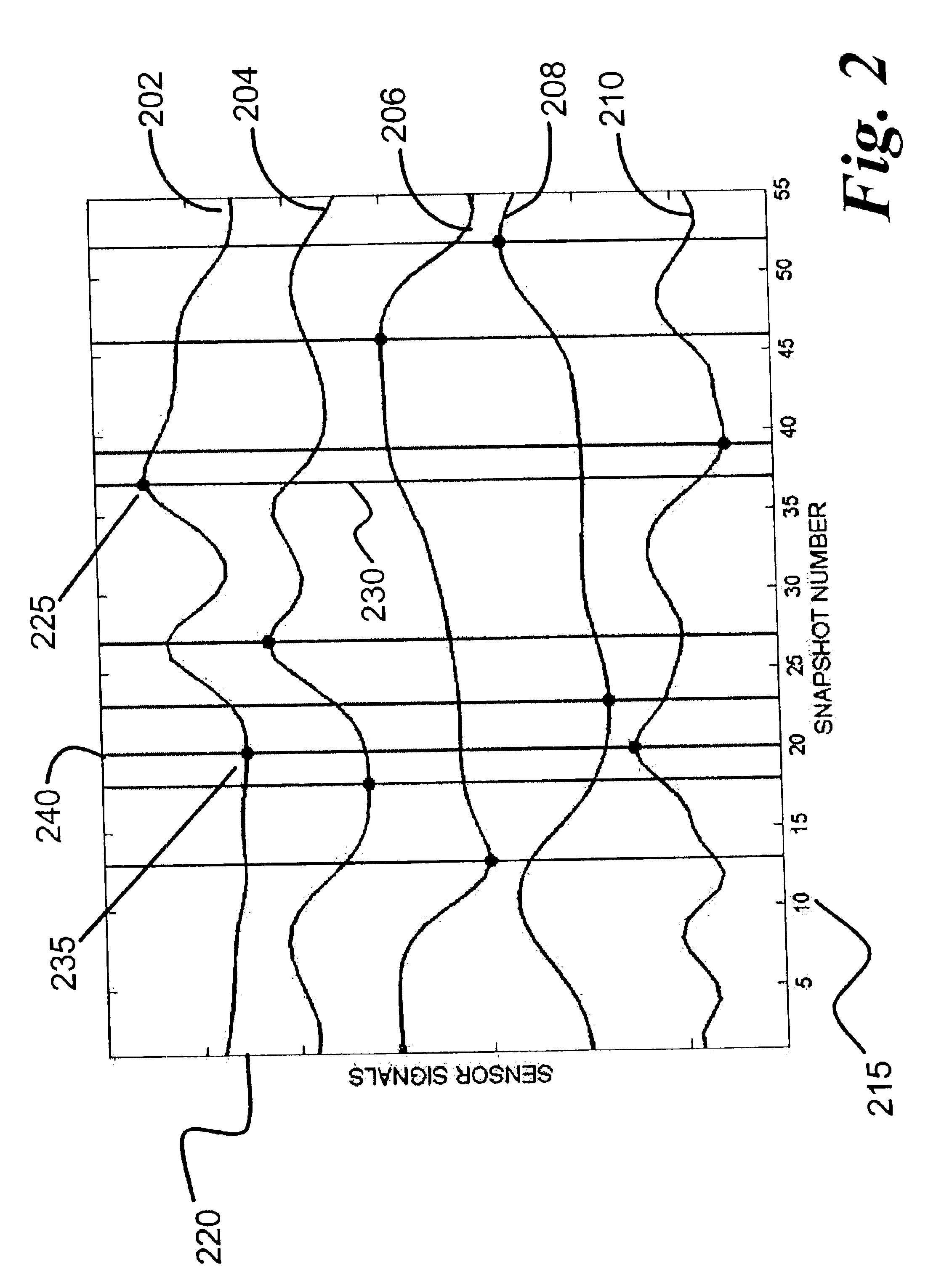Inferential signal generator for instrumented equipment and processes
a technology of inferential signal and instrumented equipment, which is applied in the direction of instruments, testing/monitoring control systems, nuclear elements, etc., can solve the problems of difficult or impossible to employ a sensor to measure a desired parameter, the environment in which the sensor is placed may be hostile to the longevity or even proper functioning of the sensor, and the environment may require a sensor that is prohibitively expensive or difficult to come by
- Summary
- Abstract
- Description
- Claims
- Application Information
AI Technical Summary
Benefits of technology
Problems solved by technology
Method used
Image
Examples
Embodiment Construction
Turning to FIG. 1, a flowchart generally shows the steps for setting up and using a process, machine, system or other piece of equipment, whether mechanical, electrical or biological in accordance with the invention. In step 110, a described embodiment of the process or machine from which inferred or replacement signals may be generated in operation, is fully instrumented with sufficient sensors to measure all parameters of interest, including the parameters for which virtual signals will be generated. In step 120, sensor data is collected as the prototype is operated through all ranges of operation that are expected later. In step 130, one of several “training” methods is used to distill the sensor data collected in step 120 into a subset sufficient to representative the operational ranges and correlations between the sensors over those ranges. These methods will be discussed below. In step 140, the distilled representative sensor data or a transformation of that data, including da...
PUM
 Login to View More
Login to View More Abstract
Description
Claims
Application Information
 Login to View More
Login to View More - R&D
- Intellectual Property
- Life Sciences
- Materials
- Tech Scout
- Unparalleled Data Quality
- Higher Quality Content
- 60% Fewer Hallucinations
Browse by: Latest US Patents, China's latest patents, Technical Efficacy Thesaurus, Application Domain, Technology Topic, Popular Technical Reports.
© 2025 PatSnap. All rights reserved.Legal|Privacy policy|Modern Slavery Act Transparency Statement|Sitemap|About US| Contact US: help@patsnap.com



